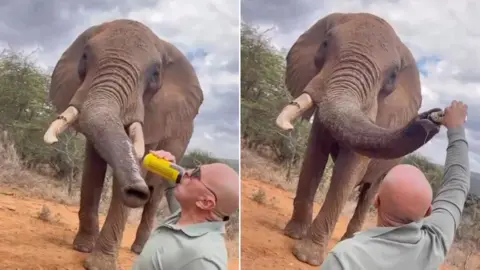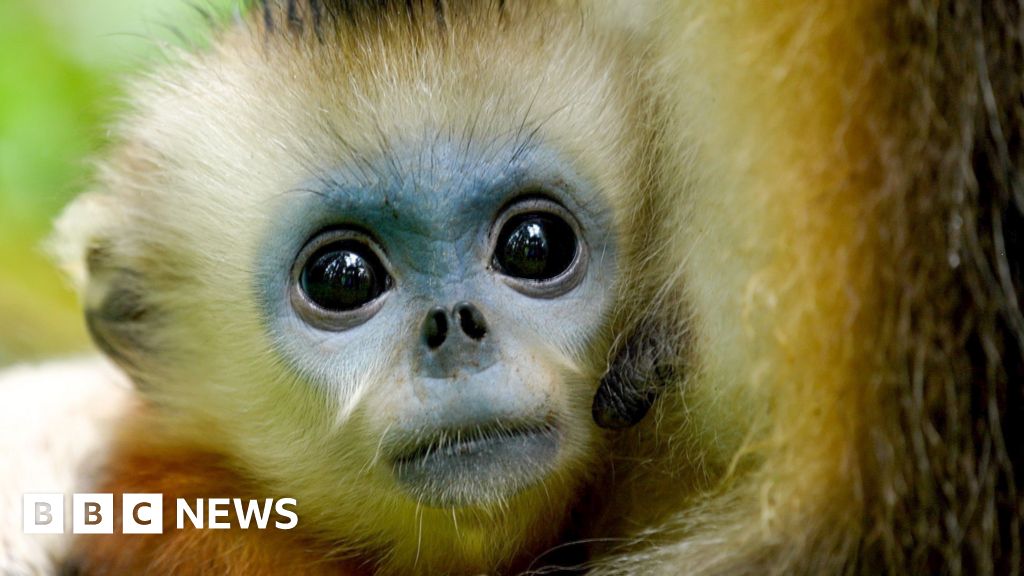In a groundbreaking conservation initiative, more than 1,300 tiny, critically endangered pea-sized snails have been released onto Bugio Island in the Ilhas Desertas archipelago, marking a monumental step in the efforts to revive two species thought extinct for nearly a century. This release not only revitalizes the ecosystem but also brings hope to the future of the Desertas Island land snails.
The journey of these snails began when a small remnant population of the species was discovered clinging to survival on the rocky cliffs of a nearby island, Deserta Grande. After their discovery by conservation expeditions between 2012 and 2017, it became imperative to act, as invasive predators like rats, mice, and goats brought to the island had destroyed much of their habitat. Between the 200 surviving individuals found, a select group was taken into captivity to preserve their species.
Chester Zoo, one of the main facilities involved in this rescue mission, created a miniature habitat for the snails, ensuring they received appropriate care and conditions. In collaboration with other zoos in the UK and France, the conservation team successfully bred 1,329 offspring, each marked with identifiable color-coded dots for monitoring purposes. According to conservation biologist Dinarte Teixeira from Madeira's Institute for Nature Conservation and Forests, this tracking will provide essential data on their adaptation and survival in the wild.
The restoration of Bugio as a wild refuge has been vital, as the area has been cleared of invasive species, allowing conditions for the reintroduced snails to prosper. Gerardo Garcia, a conservationist from Chester Zoo, reaffirmed the significance of this moment, stating that if this release succeeds, more snails could follow in the coming seasons.
Heather Prince, another member of the conservation team, emphasized the crucial ecological role of snails, noting their contribution to soil health by breaking down organic matter and supporting local flora. As these tiny mollusks begin to establish themselves in their natural habitat, their presence is a reminder of the delicate balance of ecosystems and the continued efforts required in conservation work. With this initiative, not only are these snails given a second chance, but the approach also underscores the importance of addressing invasive species for the stability of native wildlife.
The journey of these snails began when a small remnant population of the species was discovered clinging to survival on the rocky cliffs of a nearby island, Deserta Grande. After their discovery by conservation expeditions between 2012 and 2017, it became imperative to act, as invasive predators like rats, mice, and goats brought to the island had destroyed much of their habitat. Between the 200 surviving individuals found, a select group was taken into captivity to preserve their species.
Chester Zoo, one of the main facilities involved in this rescue mission, created a miniature habitat for the snails, ensuring they received appropriate care and conditions. In collaboration with other zoos in the UK and France, the conservation team successfully bred 1,329 offspring, each marked with identifiable color-coded dots for monitoring purposes. According to conservation biologist Dinarte Teixeira from Madeira's Institute for Nature Conservation and Forests, this tracking will provide essential data on their adaptation and survival in the wild.
The restoration of Bugio as a wild refuge has been vital, as the area has been cleared of invasive species, allowing conditions for the reintroduced snails to prosper. Gerardo Garcia, a conservationist from Chester Zoo, reaffirmed the significance of this moment, stating that if this release succeeds, more snails could follow in the coming seasons.
Heather Prince, another member of the conservation team, emphasized the crucial ecological role of snails, noting their contribution to soil health by breaking down organic matter and supporting local flora. As these tiny mollusks begin to establish themselves in their natural habitat, their presence is a reminder of the delicate balance of ecosystems and the continued efforts required in conservation work. With this initiative, not only are these snails given a second chance, but the approach also underscores the importance of addressing invasive species for the stability of native wildlife.





















